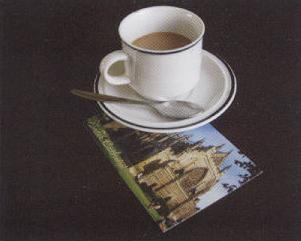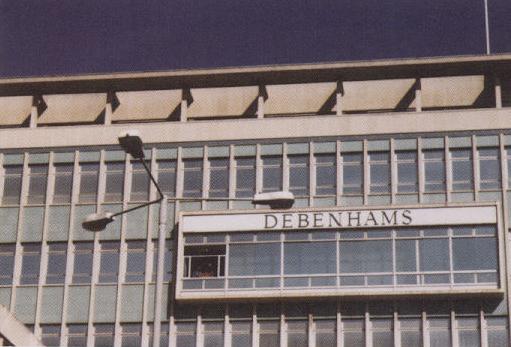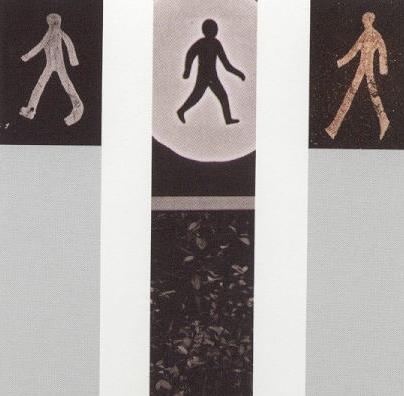An Exeter Mis-Guide
Review by Simon Morgan-Russell
[1] Most tourist guides begin with "the map." The tourist looks down on the city (or the county, or the country) as from above, its topography laid bare, scattered with historical sites that, too, may also be exposed and mapped for the tourist's investigation. This is what Michel de Certeau describes as the "exaltation of a scopic and gnostic drive" in The Practice of Everyday Life, as the tourist becomes the voyeur-spectator of the represented space, seeing only a "theoretical" simulacrum, knowing "only cadavers," and "misunderstanding" practices. An Exeter Mis-Guide, however, refuses the map; if the traditional guidebook, in de Certeau's words, "misunderstands" the city, then this "mis-guide" understands Exeter in quite different ways. To maintain the distinction in de Certeau's terms, the Mis-Guide makes "walkers" — Wandersmänner — of its readers because it refuses the totalizing spectacle of the city laid bare before the voyeur in favour of a collection of pedestrian "speech acts," what de Certeau calls the "process of appropriation of the topographical system on the part of the pedestrian." As the authors of the Mis-Guide explain, "[b]ecause we see the present flanked by memory and imagination, historical and geographical accuracy is subject to debate" (91). They invite us "to play at being a tourist" (2) by charting our own trajectories through Exeter and making the city from a bricolage of pathways and places that we have navigated ourselves.
[2] The Mis-Guide gives us several strategies to walk Exeter. Some, like "Debenhams Cathedral Views" (22-23) deliberately refuse the paradigm of the traditional tourist guide — which languishes attention on the "notable" or the "historical" — in favour of the everyday experience of the pedestrian.

In this proposal, the tourist is invited to take the lift to the fifth floor cafeteria of Debenhams Department Store (a familiar sight — or site? — in British high-street life, not even quite so upscale as JCPenney), and to seek the viewing platform that looks out over the city and its cathedral. The viewer is invited not only to "read" the city below, but to rewrite it, by placing "the buildings onto the surrounding hills" and by placing "the colours and textures of the hills into this new blank area" (23).

Following a bird's trajectory, watching a particular pedestrian, counting buses and ordering a cup of tea — these prosaic, quotidian activities overshadow the cathedral, and the Mis-Guide has its walker leave the store to follow a bird's flight path while glancing up "at Debenhams . . . [to] identify the window named Cathedral View" (and a photograph, handily, is provided). Seen from the street, the cafeteria window, named for its view of the cathedral, becomes more significant than the cathedral — and the view.

[3] Plenty of other strategies to explore our own personal Exeter are provided by the Mis-Guide. In some instances we are asked to give up the faculty of sight as our guide to navigating the city; "Touch Tours" (4), for example, encourage a tactile experience with bike stands and birch trees, and "A Journey in Smell" has us follow Exeter's olfactory geography - from hide and skin factories, coffee, and kebabs, to popcorn, perfume, and second-hand clothes (90). Still others propose journeys that are dependent on forces other than the walker's decisions. " 'Fuck-Me' Shoes" requires that the walker wear high-heeled shoes - "Black, gold, red, pointed, rounded, strappy" - and move through the city at all times of the night and day, through all weathers, in all places (7).

The pedestrian is instructed to "Walk until the shoes are ruined," to leave them at night in the "darkest, loneliest, most desolate place" and to walk home barefoot. "Dog-leg" asks us simply to "Borrow a dog from a friend. Let it take you for a walk" (41).

[4] Above, all though, the Mis-Guide requires that we relinquish our expectations about guidebooks, about knowing the city, and about navigating the routines of our own lives. "Drifting Exeter" (34-35) makes a point that can stand in for the Mis-Guide overall: it demands a "kind of walking that disrupts your usual getting about ... Drifting means disrupting all those things — even the flow of family life." The Mis-Guide makes flâneurs of its readers, discovering Exeter in discontinuous expeditions disrupted even further by what the text describes as "Walk Bites" — often unrelated to the journey they interrupt, they "could be regarded as little stumbling blocks that may take you in unexpected directions" (2): "Loiter without intent," "Seek and sense invisible boundaries," "Sightsee a supermarket but do not buy anything."


And who needs to visit Exeter to loiter without intent? As much as anything, the Mis-Guide gives us strategies for drifting through our own cities and disrupting the rhythms and routines of our own everyday lives: "Allow yourself to be stopped and diverted as often as possible," it tells us. "Accept these delays for whatever they seem to offer you" (10).

All images used with kind permission from Phil Smith for An Exeter Mis-Guide. For more information, please visit «www.mis-guide.com».
